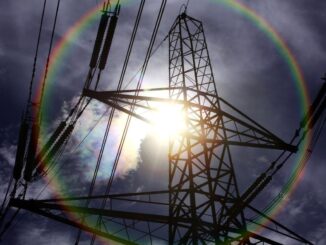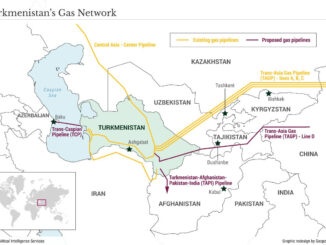
Ukraine’s strategic objectives remain murky—and the operation creates many risks—but it could alter the course of the war.
Ukraine’s incursion into Russia’s Kursk region has raised many questions. Why send thousands of forces north when Ukrainian territory is being lost elsewhere? Why incentivize Moscow to reinforce a border region that has been relatively quiet, hence creating a longer-term security dilemma for Ukraine? Why not wait until Ukrainian units in the east and south were robust enough to leverage any siphoning of Russian forces resulting from an operation in the north?
Whatever Kyiv’s actual goals may be, the operation holds important insights regarding the long-term trajectory of the war. It’s possible, although not yet certain, that the Kursk offensive is not merely an opportunistic gambit but rather part of a broader military campaign that could stretch well into 2025, purposefully setting the stage for operations elsewhere.
Secondly, the offensive appears to provide evidence of Ukrainian ability to leverage Western training in a way unseen during the failed counteroffensive of 2023, namely by using combined arms maneuver warfare—the synchronization of various combat tools in a way that shocks, disorients, and ultimately defeats an adversary.
If these preliminary conclusions crystallize, the Kursk offensive could prove to be a major turning point.
To their credit, Ukrainian officials have maintained impressive operational security surrounding the unfolding offensive, offering no foreshadowing that such an operation was in the offing and providing few post hoc insights into its rationale since it began. Some observers have speculated that the operation is intended largely for political purposes. Certainly, at the strategic level—and at a time when many in the West are now considering what Ukrainian forces will need to initiate a broad counteroffensive in 2025—the Kursk operation may generate optimism among Ukraine’s supporters and bolster their willingness to continue funding and training. Evidence for this already exists in some of the reactions across the West.
However, it is difficult to believe that the principal aim of the Kursk offensive—10 days old as of Aug. 16—is purely political, intended to strengthen Kyiv’s bargaining position in (nonexistent) peace talks, guarantee additional Western assistance, undermine Russian President Vladimir Putin’s authority at home, or facilitate prisoner exchanges.
Of course, as all students of Prussian Gen. Carl von Clausewitz know, warfare is an extension of politics. But to conclude that Ukraine would send thousands of troops north on a risky operation into Russian territory while its forces to the south and east are slowly losing ground for purely political reasons seems dubious at best.
Alternatively, some Ukrainian officials have claimed that the Kursk operation is intended to complicate the flow of forces from elsewhere in Russia to Ukraine’s eastern Donetsk region. This seems doubtful, given the relatively limited extent of the operation so far and the lack of evidence regarding the interdiction of major rail lines, roadways, or other transportation infrastructure or platforms related to the flow of personnel and equipment into Donetsk. Ukrainian forces would have to drive farther east into Russia, probably to the rail junction at Voronezh, roughly 200 miles to the east of the border town of Sudzha in Kursk Oblast, or roughly the same distance headed southeast toward Valuyki, to interdict the rail lines or roads that eventually make their way into Ukraine’s Donbas.
Ukrainian officials have also claimed that the Kursk offensive was intended to enable the destruction of Russian facilities and platforms engaged in glide bomb and other long-range operations against Ukrainian territory. On Aug. 13, a Ukrainian official argued that Kyiv’s forces lacked enough long-range weapons to hit these targets from across the border. However, that very night, Ukraine conducted its largest drone operation to date, reportedly sending scores of drones to hit facilities and platforms across a wide swath of Russian territory, including in Kursk, Belgorod, Voronezh, Volgograd, Bryansk, Orel, Rostov, and faraway Nizhny Novgorod—approximately 500 miles from the Ukrainian border.
Somewhat more likely than all these other rationales, and as some Ukrainian officials have indicated, the operation seems designed to relieve pressure on Ukrainian forces in the south and east. It may also force Moscow’s military planners to consider the longer-term defense of Russia’s border with northern Ukraine, tying down more troops there and introducing a new constraint on Russian commanders. So far, there have been some reports that Russian officials have diverted troops from the southern portion of the front as well as from Kaliningrad.
However, even if pressure is relieved, it is unlikely that Ukrainian troops in the east and south will have the wherewithal to conduct a counteroffensive of their own, at least in the short run.
There are two reasons for this. First, there is evidence that Ukrainian units trying to hold the lines in the east and the south are both exhausted and undermanned. Tired troops without a numerical advantage over the defender will find it difficult to succeed. And second, even if those Ukrainian units were capable of erasing the Russian gains of the last several months, just behind those gains lay the same in-depth Russian fortifications—trenches, tank ditches, minefields—that frustrated Ukraine’s counteroffensive operations in 2023.
Instead, the Kursk offensive may be part of a broader, longer-term campaign strategy that seeks to buy time for Ukrainian troop strength to rebound over the remainder of this year while simultaneously halting a slow but steady advance of Russian forces in the east. Changes in Ukraine’s conscription laws—including lowering the draft age to 25, facilitating easier identification of draft-eligible men, providing more financial incentives, and authorizing the enlistment of some prisoners—were only approved in April, and some of those reforms only took effect in May. Getting new recruits through basic training, platform-specific training, and collective unit training—largely conducted outside Ukraine—will take several months.
Another important silver lining made evident by the Kursk offensive is that Ukrainian success so far provides some evidence that teaching Western-style combined arms maneuver warfare to Ukrainian forces has not entirely been a lost cause. Some observers have argued that Ukrainian forces were unable or unwilling to employ this type of training, given the depth of Russian defensive fortifications, the lack of sufficient covering airpower, the ubiquity of battlefield surveillance, or residual Soviet-era military mindsets among some Ukrainian personnel. However, what we know of the Kursk offensive so far provides some evidence of Ukrainian ability and will to employ this style of warfare in the right circumstances.
Combined arms maneuver warfare involves the synergistic employment of multiple “arms”—infantry, artillery, armor, and attack aviation, for example—in a way that is greater than the sum of the parts. “Maneuver”—as opposed to mere “mobility”—involves rapid, unexpected, and violent actions that shatter enemy cohesion, allowing even a smaller force to opportunistically exploit enemy vulnerabilities.
The recent offensive included all of these things and bodes well for future Ukrainian military operations elsewhere, given the unlikelihood of Russia’s defeat in an attritional war.
Nonetheless, and despite the evident success of the offensive so far, Ukrainian operations in Kursk alone are highly unlikely to significantly alter the trajectory of the conflict in the short run. Clearly, the Russian response shows further evidence of continuing challenges in the Kremlin’s command and control and joint operations, but it remains likely Russia’s military will eventually eject Ukrainian forces.
Indeed, the embarrassment in Russia—at both the political-strategic and operational levels—caused by the Kursk offensive may result in a significant increase in the Russian military presence in Kursk and neighboring regions along Ukraine’s northern border. Ultimately, this may generate headaches for Kyiv, as it will be required to beef up its defenses in the north, possibly at the expense of units in the south and east.
Moreover, Ukrainian lines are likely to become extended as the advance continues onward into Kursk and perhaps neighboring regions of Russia, such as Belgorod. As this occurs, logistical stretch may become the limiting factor for Ukraine—perhaps even more limiting than a well-coordinated, well-orchestrated Russian response.
Even so, however it ends, the Kursk offensive will offer critical insights into Ukrainian long-term campaign planning as well as Kyiv’s ability to utilize all the assistance the West continues to provide. Creative, robust planning and training are comparative advantages that the West and Ukrainian allies hold over Russia, and Ukrainian success is likely to hinge on their continued exploitation.
Take the Survey at https://survey.energynewsbeat.com/






